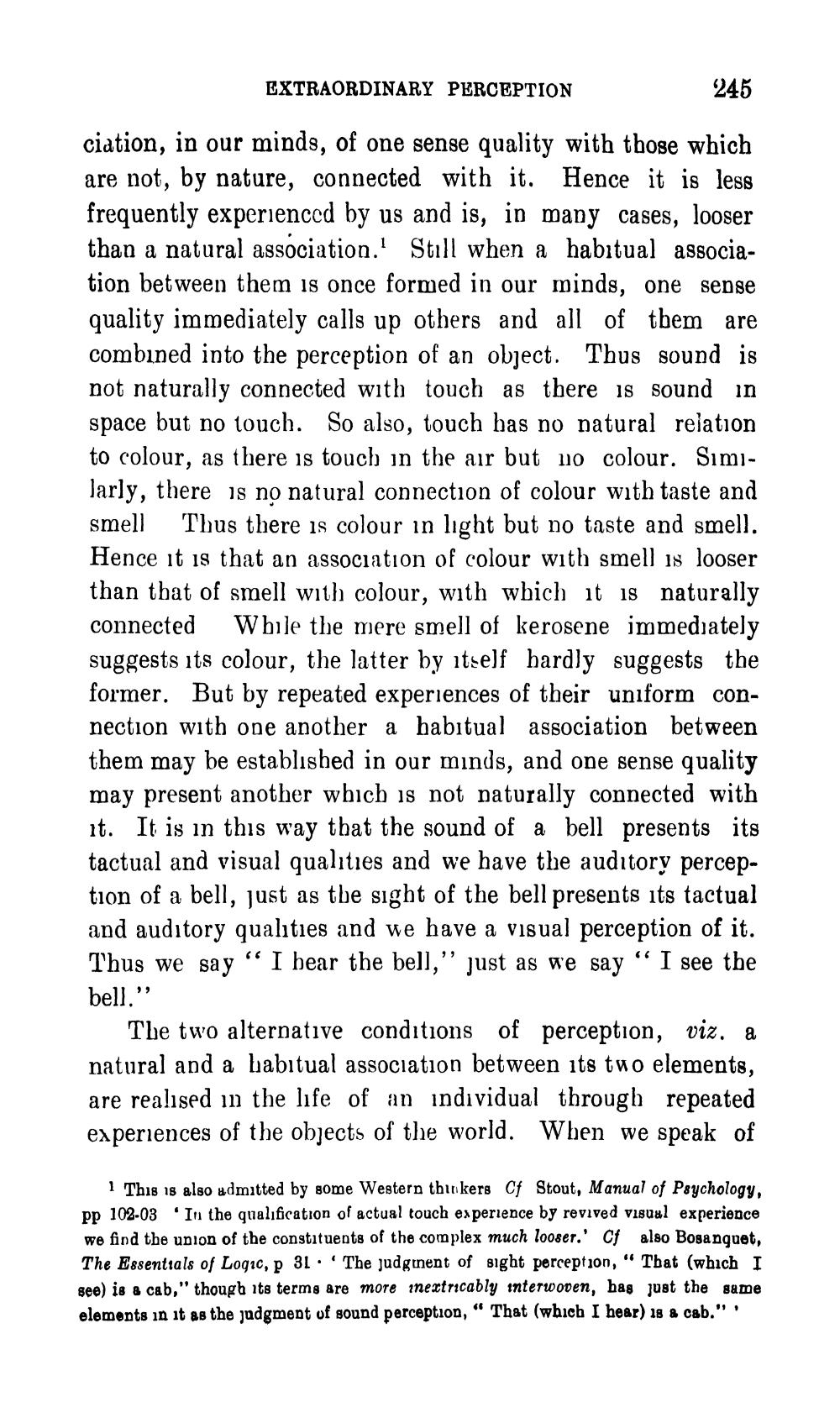________________
EXTRAORDINARY PERCEPTION
245
ciation, in our minds, of one sense quality with those which are not, by nature, connected with it. Hence it is less frequently experienced by us and is, in many cases, looser than a natural association. Still when a habitual association between them is once formed in our minds, one sense quality immediately calls up others and all of them are combined into the perception of an object. Thus sound is not naturally connected with touch as there is sound in space but no touch. So also, touch has no natural relation to colour, as there is touch in the air but 10 colour. Similarly, there is no natural connection of colour with taste and smell Thus there is colour in light but no taste and smell. Hence it is that an association of colour with smell is looser than that of smell with colour, with which it is naturally connected Wbile the mere smell of kerosene immediately suggests its colour, the latter by itself hardly suggests the former. But by repeated experiences of their uniform connection with one another a habitual association between them may be established in our minds, and one sense quality may present another which is not naturally connected with it. It is in this way that the sound of a bell presents its tactual and visual qualities and we have the auditory perception of a bell, just as the sight of the bell presents its tactual and auditory qualities and we have a visual perception of it. Thus we say “I bear the bell," just as we say “ I see the bell."
The two alternative conditions of perception, viz. a natural and a habitual association between its two elements, are realised in the life of an individual through repeated experiences of the objects of the world. When we speak of
1 This is also admitted by some Western thuo kers Cf Stout, Manual of Psychology, pp 102-03 'In the qualification of actual touch experience by revived visual experience we find the union of the constituents of the complex much looser.' Cfalso Bosanquet, The Essentials of Logic, p 31. The judginent of sight perception, " That (which I see) is & cab," though its terms are more inextricably interwoven, has just the same elements in it as the judgment of sound perception, " That (which I hear) 18 a cab.",




